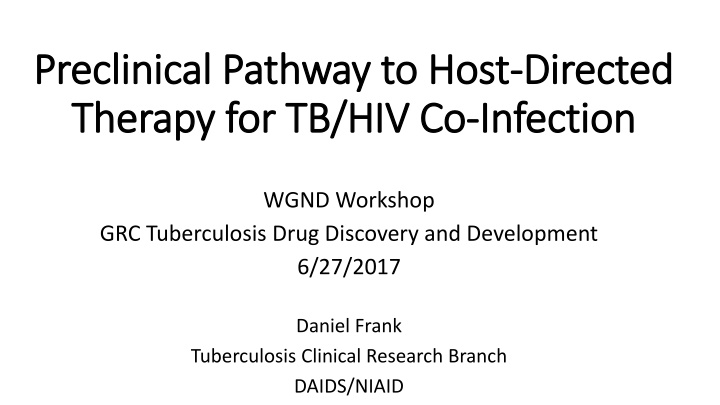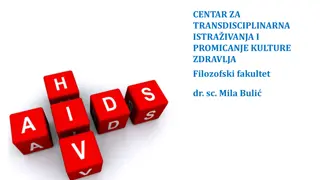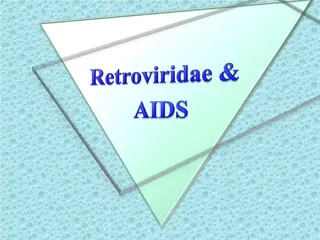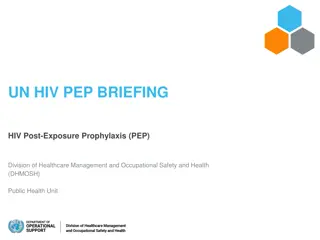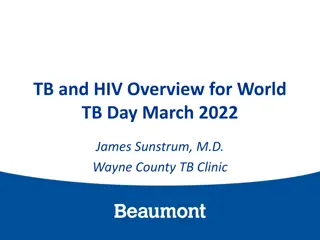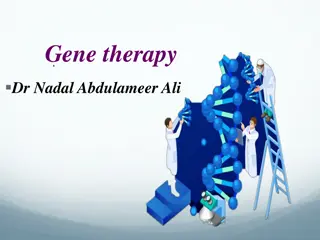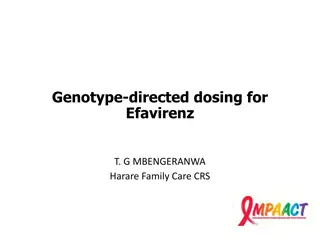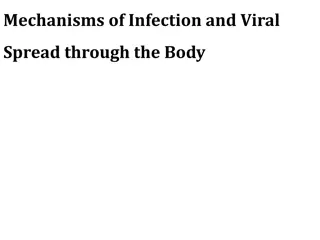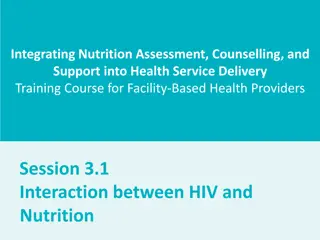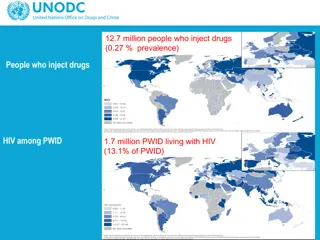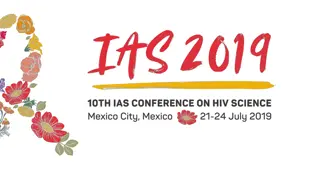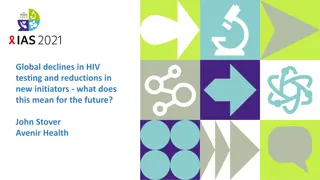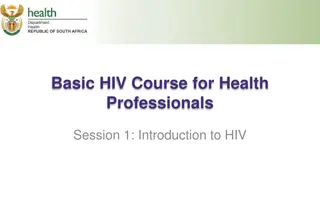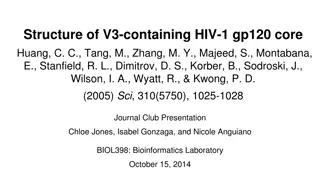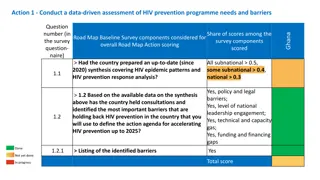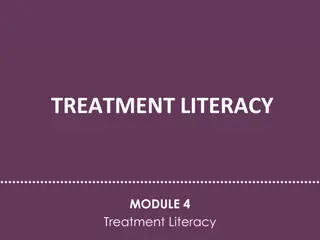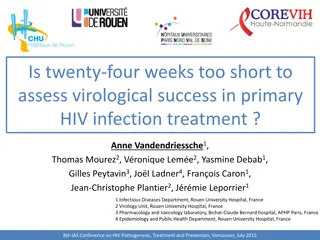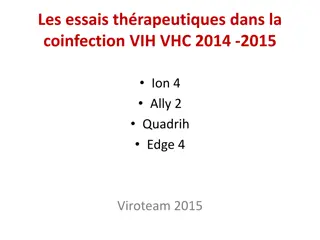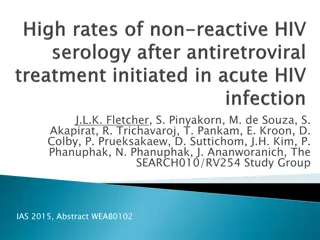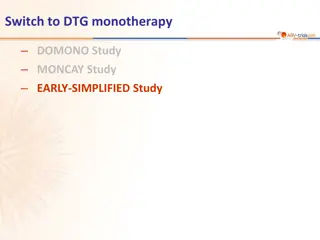Host-Directed Therapy for TB/HIV Co-Infection
Antibacterial drug development for TB faces challenges due to resistance and lack of incentives. Host-directed therapy shows promise in reversing disease effects by targeting core cell pathways disrupted by pathogens. New approaches like Imatinib, statins, IL-1 antagonists, and autophagy inducers are being explored to combat TB and HIV co-infection. Research aims to identify molecular immune cell changes induced by infection for therapeutic targeting.
Download Presentation

Please find below an Image/Link to download the presentation.
The content on the website is provided AS IS for your information and personal use only. It may not be sold, licensed, or shared on other websites without obtaining consent from the author.If you encounter any issues during the download, it is possible that the publisher has removed the file from their server.
You are allowed to download the files provided on this website for personal or commercial use, subject to the condition that they are used lawfully. All files are the property of their respective owners.
The content on the website is provided AS IS for your information and personal use only. It may not be sold, licensed, or shared on other websites without obtaining consent from the author.
E N D
Presentation Transcript
Preclinical Pathway to Host Preclinical Pathway to Host- -Directed Therapy for TB/HIV Co Therapy for TB/HIV Co- -Infection Directed Infection WGND Workshop GRC Tuberculosis Drug Discovery and Development 6/27/2017 Daniel Frank Tuberculosis Clinical Research Branch DAIDS/NIAID
Importance of Host Directed Therapy Importance of Host Directed Therapy Antibacterial drug development for TB is inadequate because of lack of incentive and drug resistance continues to increase Traditional vaccine approaches have failed for TB and HIV New discoveries and precision medicine interventions have revolutionized therapy by safely reversing effects of molecular drivers of disease that affect fundamental/core cell regulatory pathways Pathogens disrupt functions of immune cells essential for host defense by modulating many of these same core cellular pathways
RFA RFA- -AI AI- -14 14- -058 058 Host Host- -Directed TB Therapy: New Approaches Directed TB Therapy: New Approaches First generation gents selected as anti-inflammatory and generally well tolerated, or empirically Imatinib Statins IL-1 antagonist Autophagy inducers 2 year UH2 award for preclinical development and clinical trial planning 3 year UH3 award for proof of concept clinical trial
Next Next- -Generation Candidate HDT Agents Generation Candidate HDT Agents Guided choices from the many target agents designed to reverse abnormalities in cell regulatory caused by microbial pathogenesis: MAPK Rho/Rock RAS MEK-ERK PI3K-AKT-mTOR PARPs Sirtuins CD38/AMPA channel AMPK TKIs SIKs TNF/Ikk- PTEN/p53 Notch Hedgehog GSK-3 cyclins/CDKs Mevalonate metabolism Keap1 DPP-4 Sphingosine1 kinase cAMP-PKA HIF-1 Angiotensin II receptor Cyclophilin D 4
Dysregulation of Immune Cell Regulatory Pathways by Mtb in the Context of HIV Infection RFA-AI-17-010 (R61/R33) Due date: August 1, 2017 R61 Phase research will include hypothesis-based, milestone-driven preclinical studies focused on identifying changes in infected macrophages/dendritic cells, and subsequent changes in uninfected immune cells, as well as how HIV co-infection alters Mtb-induced cellular changes. Specific molecular immune cell regulatory changes induced in Mtb or Mtb/HIV infected cells will be delineated as potential targets for therapeutic intervention. Identification and characterization of target molecules will inform efforts to test interventions for the affected immune response control pathways. R33 Phase research will support preclinical proof of principle studies by modulating the target to confirm its immunopathogenic relevance, and to begin therapeutic agent identification/evaluation in an appropriate model system. Strategies may include the use of targeted small molecules, biologics, miRNA, or other methods of restoring host immune regulation, and evaluation of changes in bacterial load, immune cell bactericidal activity, inflammatory control, and prevention of tissue damage.
